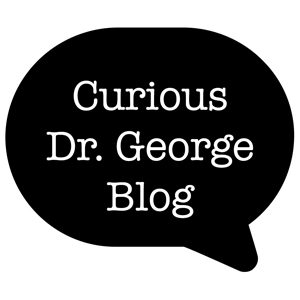10 Things I Learned in 10 Years at Cancer Commons That Could Save Your Life

Curious Dr. George
Cancer Commons Editor in Chief George Lundberg, MD, is the face and curator of this invitation-only column

Marty Tenenbaum, PhD
Founder of Cancer Commons
After facing his own cancer, Marty Tenenbaum, PhD, founded Cancer Commons to help others dealing with the disease. Here, Curious Dr. George asks him to share what he has learned.
Curious Dr. George: As a well-known survivor of metastatic melanoma, and as the founder of Cancer Commons, you are often sought out by friends and acquaintances who have just been diagnosed with cancer or have been told that their cancer has spread. What do you typically tell them?
Marty Tenenbaum, PhD: In my experience as a patient and as the founder and Chair of Cancer Commons, I have gleaned wisdom that every patient should know to have the best chance of beating the odds.
When I was a patient 25 years ago, much less was known about cancer than is known today, and there were far fewer options for treating it. Today, we know that cancer covers thousands of molecularly distinct diseases, and that hundreds of therapies are available to treat it. What no one knows is the optimal way to treat your cancer. The best treatment likely involves an individualized combination of targeted- and immuno-therapies. There are far more rational regimens than can be tested in clinical trials. I founded Cancer Commons to help patients navigate this maze and achieve the best possible outcome.
Here’s my advice:
- Patients who take charge of their care fare better. No one else has the time or motivation that you do to dig into your case. Keep your eyes open. A clinical trial you hear about, or something subtle you see can make a life-or-death difference. My life was saved by a clinical trial someone told me about, involving a treatment that ultimately failed clinical testing. But I was fortunate to be an exceptional responder, and the treatment saved my life. But maybe that wasn’t an accident. Early on, I noticed that I was getting a much stronger reaction to a vaccine when it was administered by a particular nurse. Thereafter, I demanded that nurse, and sometimes stayed overnight if she was unavailable that day. Years later, I asked the principal investigator whether he had ever re-analyzed the trial data according to which nurse was administering the treatment. He answered, “why would I do that?” I responded, “because your trial might have been successful.”
- Your first and most important decision is choosing the right doctor. The difference between the best and worst doctors can be measured in years of survival. Generally speaking, major academic cancer centers deliver much better outcomes for complicated cases than community oncology centers. Their physicians specialize in particular cancers so it is easier for them to stay up to date. They also participate in clinical research and hence can offer access to clinical trials. There are exceptions. My own life was saved by an extraordinary physician-scientist named Don Morton, MD, who chose to practice in a community setting because he felt that gave him more freedom to try innovative things beyond the standard of care. Major cancer centers expect their physicians to adhere to evidence-based guidelines, which raises the average outcome but holds back top performers like Dr. Morton.
- Get your tumor tested for genetic mutations. Knowing the molecular drivers of your cancer allows your doctor to precisely target them using a cocktail of drugs that attack specific types of cancer cells. Such targeted therapies can deliver better results, with fewer side effects than traditional chemotherapies, which target all rapidly replicating cells, including those comprising your hair and intestinal linings. A minority of patients get this testing. Demand it, and don’t be afraid to request that your tumor be sent out to a world-class lab. Cancer Commons can guide you to appropriate providers.
- Avoid trial and error. When possible, have your care team test potential therapies for efficacy in a lab or on a computer before giving them to you. This might involve, for example, applying a proposed therapy to fresh tumor tissue from a biopsy, or to an organoid or cell line grown from fresh tissue, or testing a proposed therapy virtually on a computer model of your tumor. You can only try a handful of treatments over the course of your disease. Make sure they’re the best. Then monitor your actual response to therapy and be prepared to pivot if necessary.
- If you’re fortunate enough to drive your cancer into remission, stay vigilant. Regular scans and blood tests are essential to detect and respond in a timely fashion to a recurrence. Getting PET/CT scans every six months saved my life; a metastasis was detected five and half years after I thought I was cured. Very sensitive blood tests can now detect minimal residual disease 10 to 100 times smaller than what can be seen on a scan.
- Many patients, upon achieving remission, celebrate by suspending treatment, hoping their cancer will not return. But battling cancer is not a boxing match, where you knock your opponent down and the ref sends you to your corner until they get up. It’s a knife fight. When your opponent goes down, step on their throat and finish them off. Remission is the time to try immunotherapies that can mop up remaining lethal cells.
- Many oncologists dismiss surgery as an option for metastatic cancer. You shouldn’t. While surgery is not indicated for widely disseminated disease, it can control isolated metastases and reset the clock to give systemic therapies a chance. I speak from first-hand experience.
- Most tumors are not homogeneous. They are evolutionary ecosystems of molecularly distinct sub-populations competing for survival. They have different rates of replication, evolutionary fitness, sensitivity to a chemotherapy, and different potential to kill you. It’s important to understand these dynamics in choosing a therapeutic regimen—which therapies, in what order, dosing, and timing—because the last thing you want to do is to wipe out all the easily killed cells that are holding the lethal cells in check.
- Don’t let dire survival statistics intimidate you. By definition, half of all patients exceed the median survival, and there’s a long tail that can stretch many years. Following my advice will help you beat the odds. Case in point, me.
- The best way to cure cancer is to catch it early. A new generation of molecular screening tests is making that possible. If you test positive, Cancer Commons will help you identify and access the best treatments.
While Cancer Commons is committed to helping everybody regardless of their means, the reality is that some treatments may only be available to those who can pay for them out of pocket. If you are so fortunate, be advised that there are options available far beyond what can be offered to most patients, ranging from experimental, personalized vaccines to engaging a scientific team specifically to research your cancer and how most effectively to treat it. Cancer Commons can help you access these options, and what we learn can help many other patients.
Dr. Tenenbaum can be reached at jmt@cancercommons.org.


